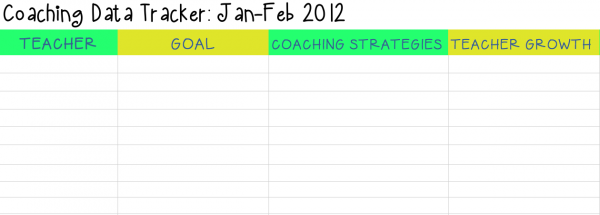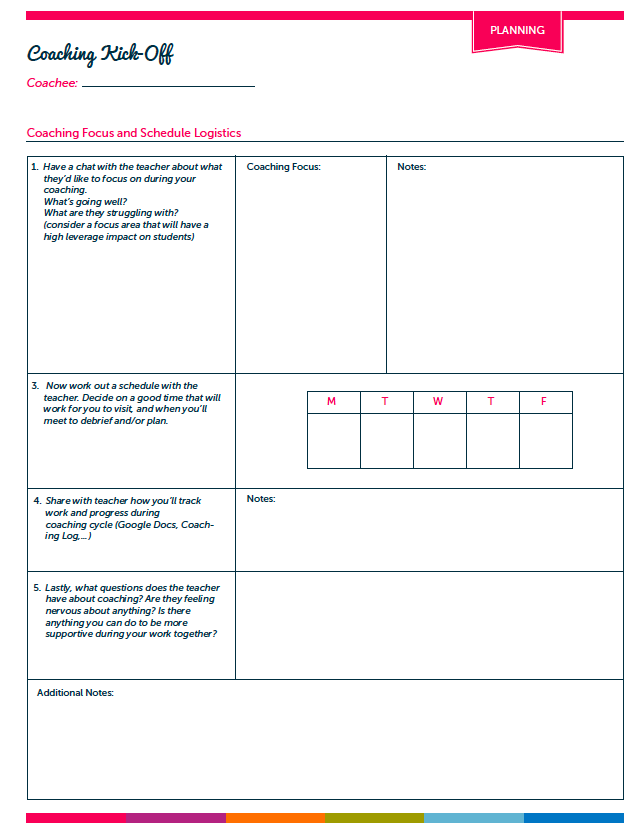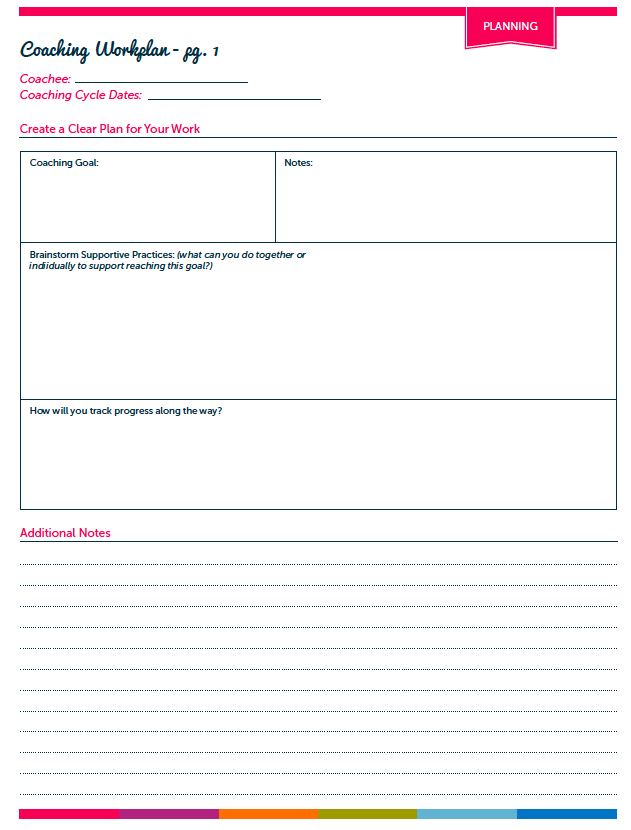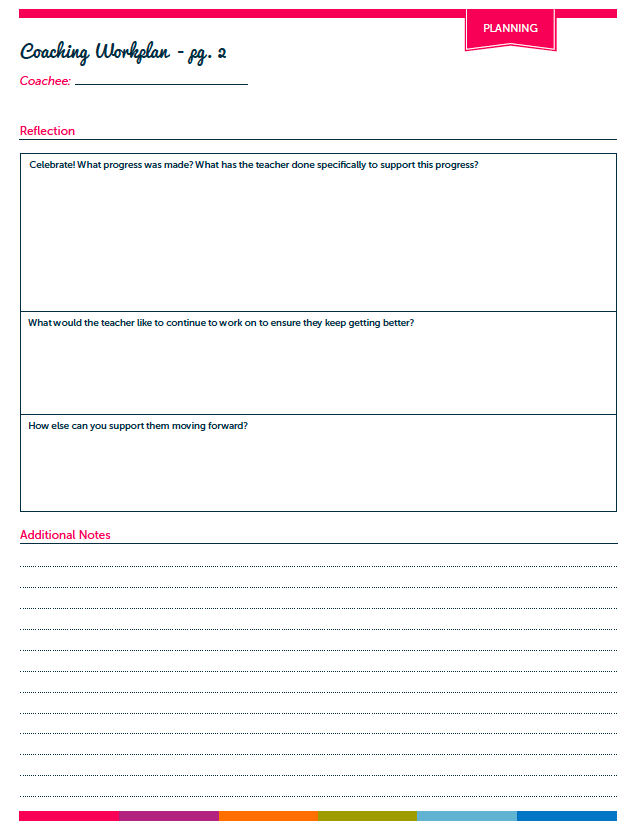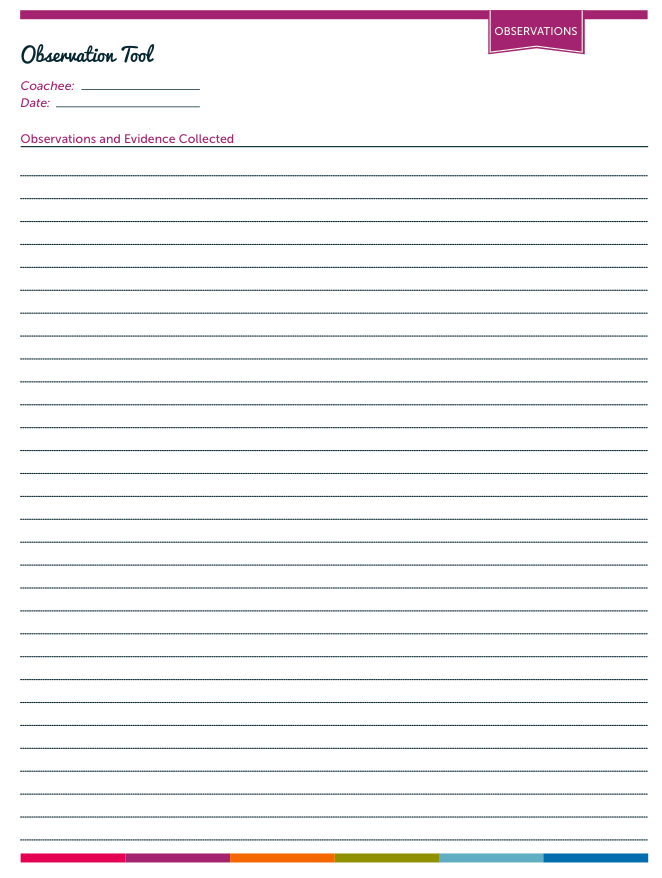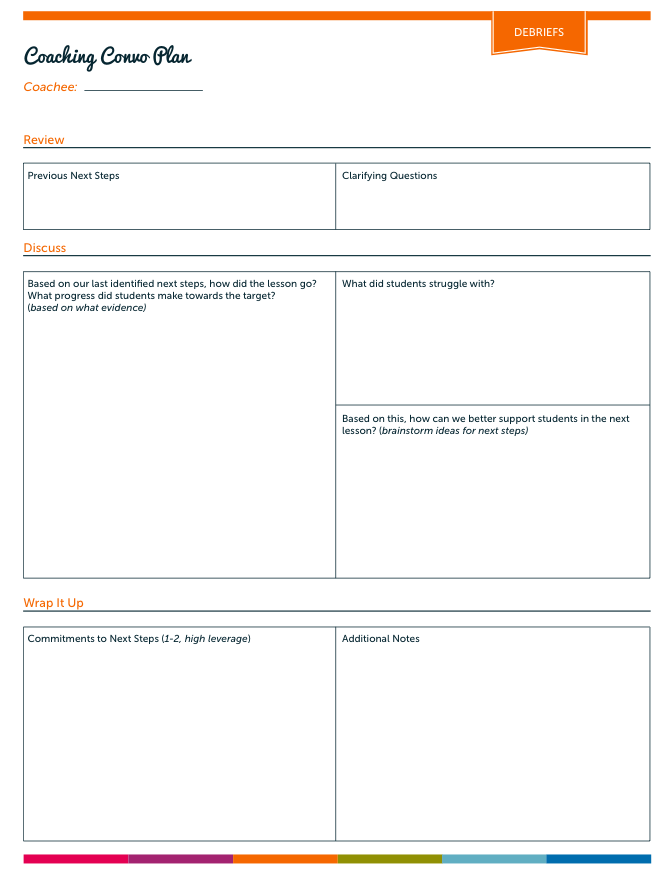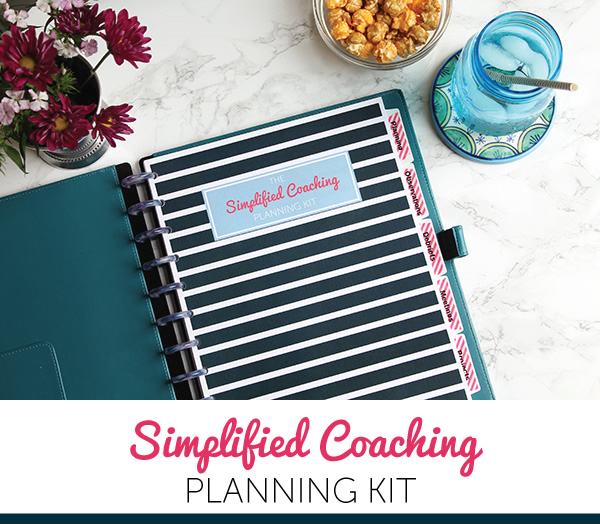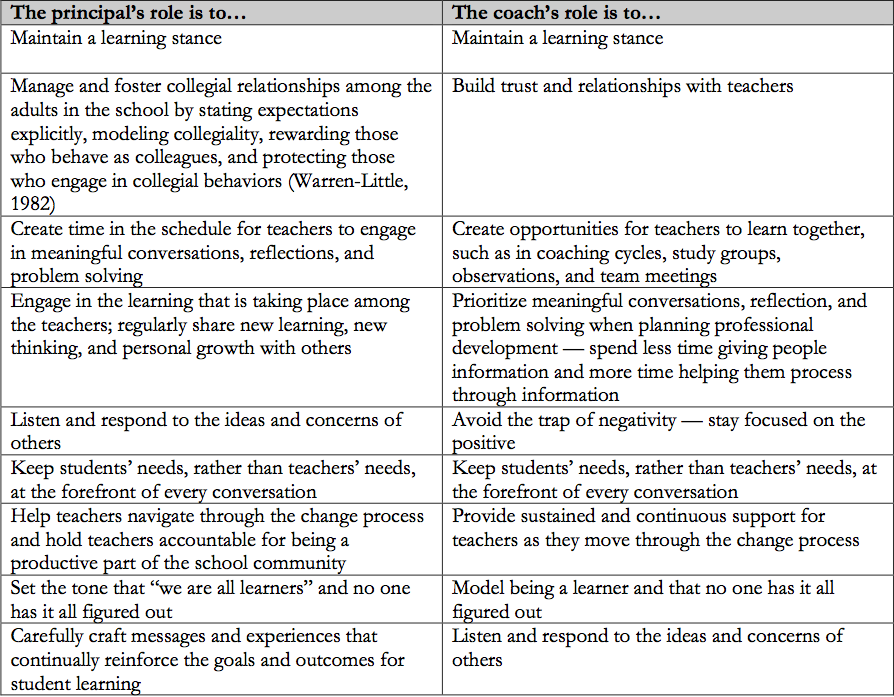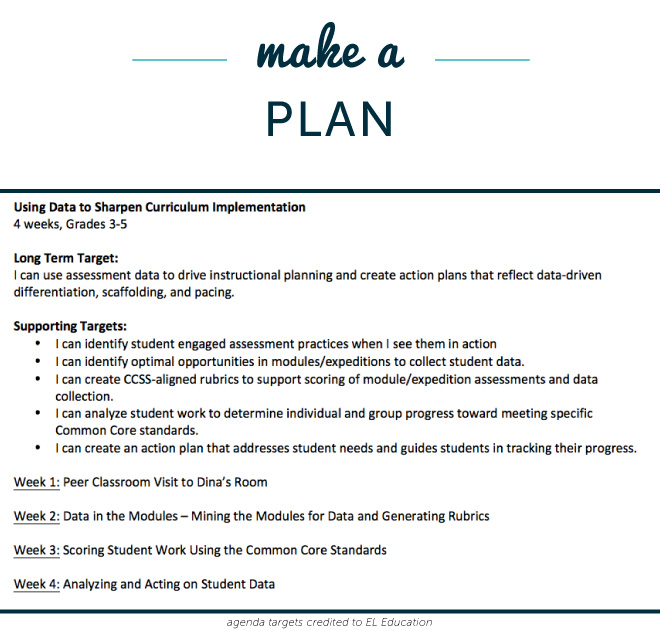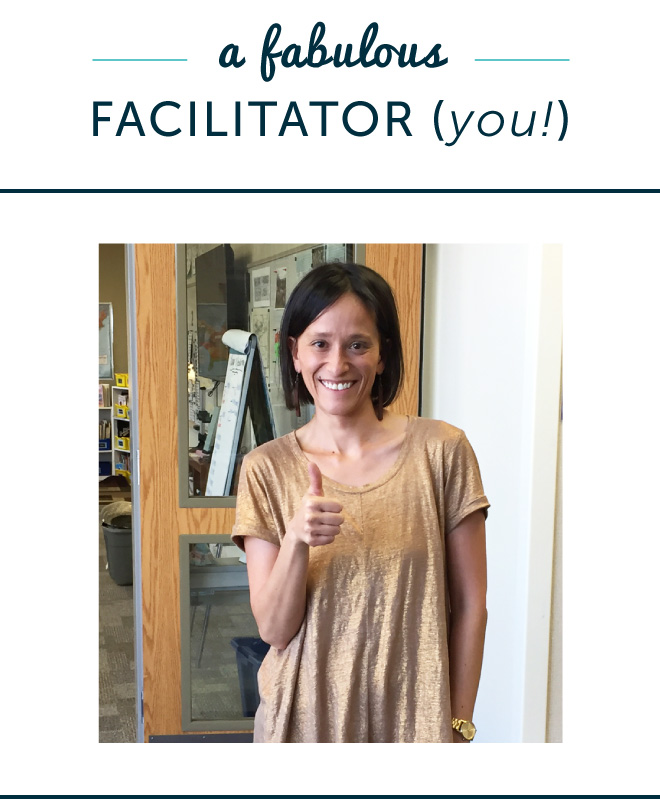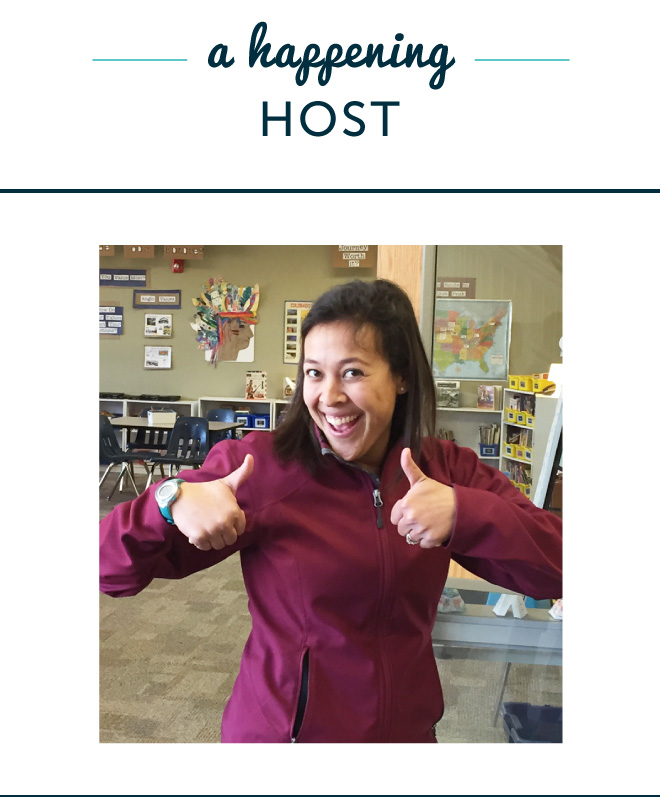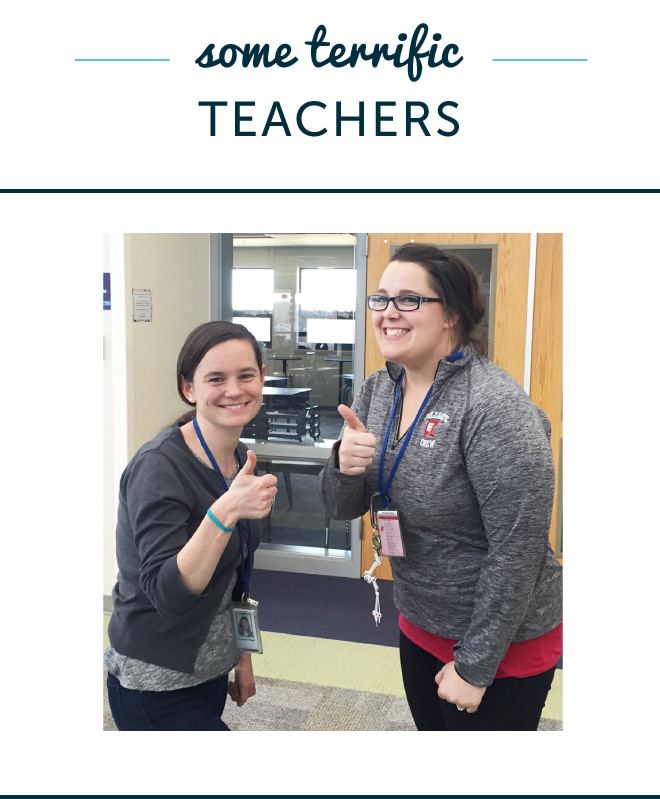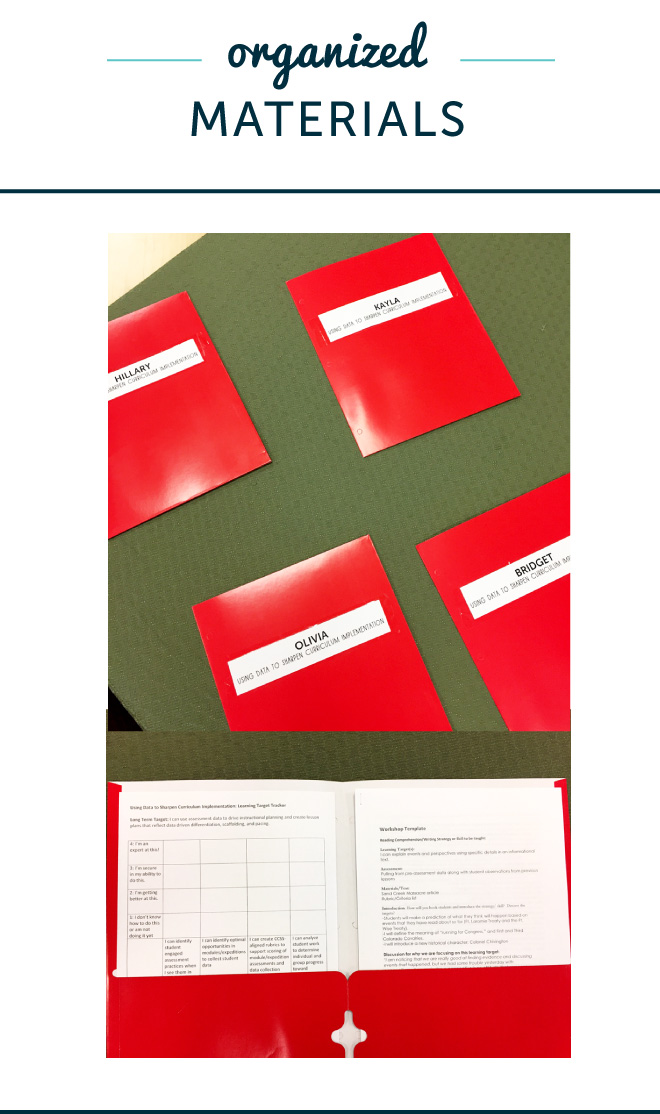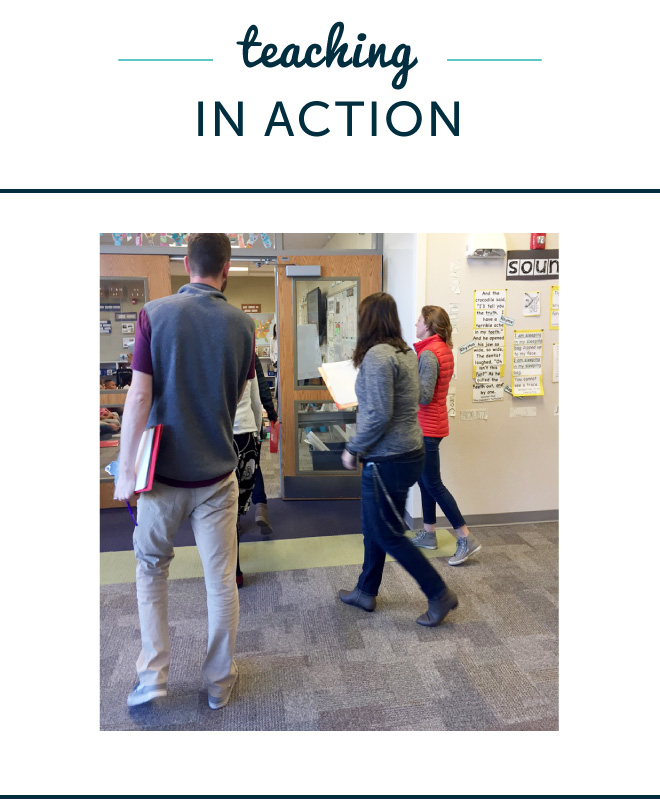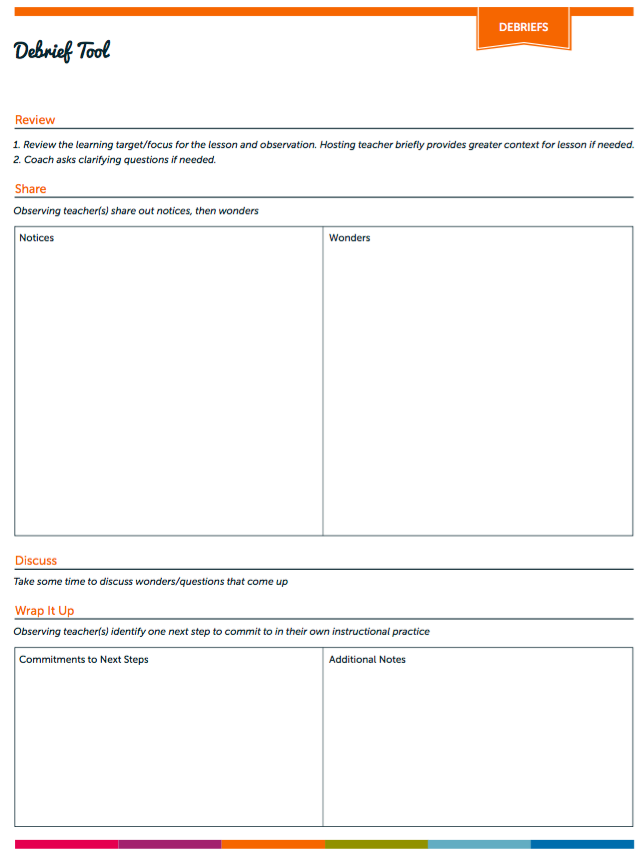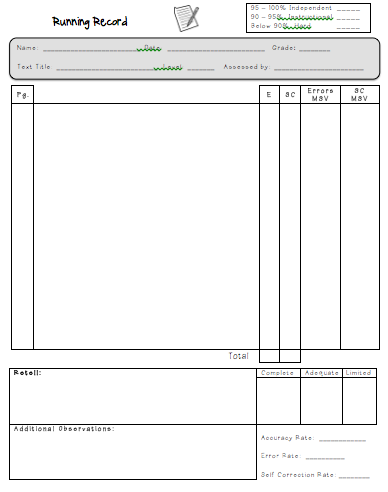Do you have a plan for how you’ll work with teachers in coaching cycles throughout the year? Let’s talk through how to get these mapped out for the year.
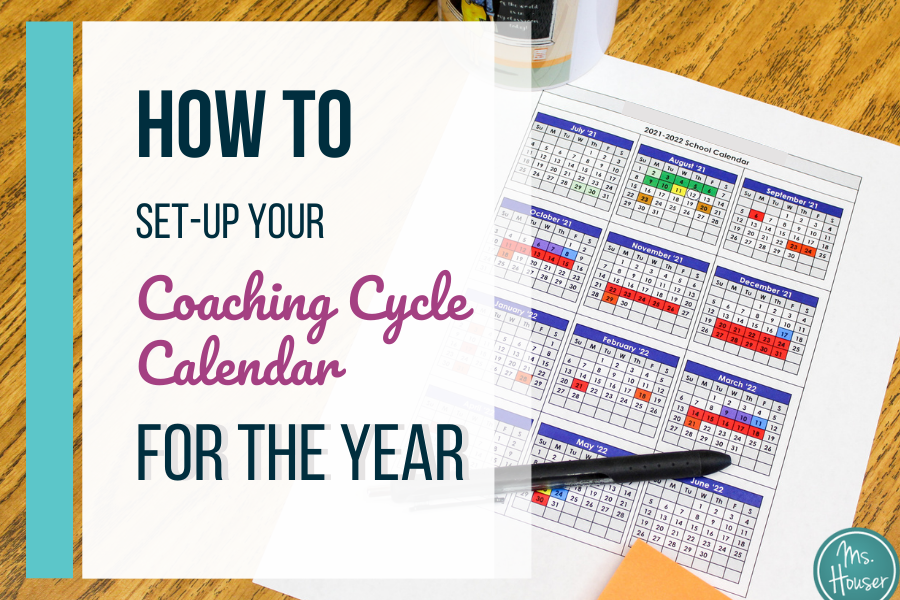
In the last few years, I’ve started to map out my coaching cycles for the year, and I’ll tell you…I would never want to go back!
Only having to “launch and market” your coaching support once at the beginning of the year, sure takes a load off your shoulders, and also gives you so much clarity in your weekly and monthly planning.
I’m currently working with my co-coach and principal in preparing to map out coaching cycles for the year, and thought it would be helpful to walk you through our process.
How to Map Out Your Coaching Cycles for the Year
1. Determine How Long Your Coaching Cycles Will Be
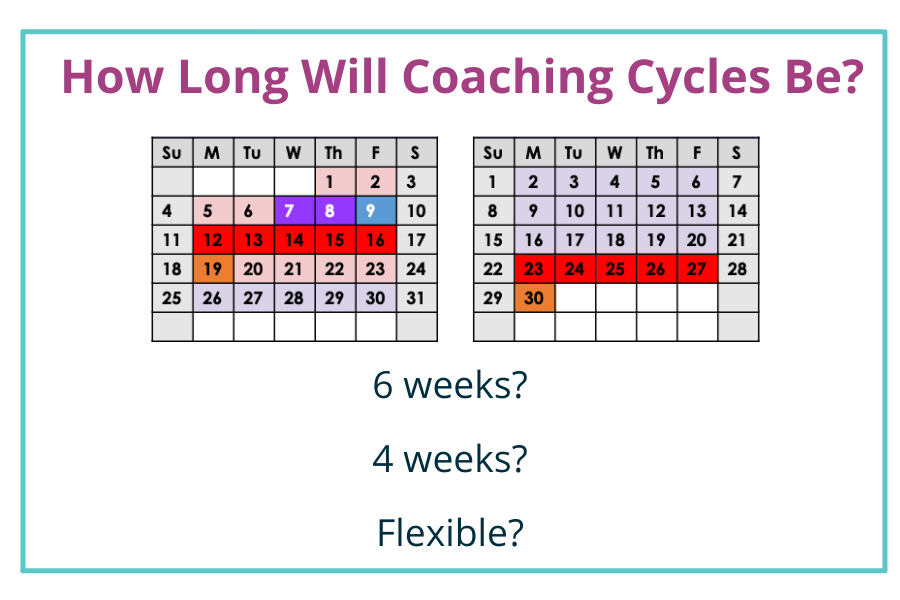
The length of a coaching cycle often varies depending on your coaching model or approach.
You may also want to add in “intensives” or short cycles in between longer cycles to meet certain building needs.
For us, we structure our coaching cycles in four, 6-week rounds with the goal of engaging every teacher in at least one full coaching cycle during the year.
2. Create a Professional Development Calendar

As coaching cycles are a form of professional development, it’s helpful to have a calendar set-up that shows all of the professional development structures for your school. On this calendar, also add in holidays and any other “no-school” days.
You can then use this to map out where your coaching cycles would best be placed.
3. Add Your Coaching Cycle Rounds to the Professional Development Calendar

Now just ‘color in’ your coaching cycle dates for the year! You can see above how we used the color purple to indicate these days.
And as I mentioned earlier, this will depend on about how long you typically run your cycles.
4. Launch an Invitation for All Teachers to Enroll in One of the Coaching Cycle Rounds

Once you’ve done the pre-work of mapping out your coaching cycles or ’rounds’ for the year, you’re ready to launch to the staff!
We plan on doing this in a whole staff meeting this year, though I have also “launched” via email and a snazzy Google Form.
In our upcoming launch meeting, our principal will be leading the messaging, and my co-coach and I will be sharing our goals in working with teachers and how we believe teachers will benefit from participating in a coaching cycle.
5. Iron Out Logistics with your Leadership Team

As a leadership team, you’ll want to figure out and agree on certain logistics of your coaching cycles for the year. This could include:
- How many teachers each coach will work with during each round?
- Who is coaching who and when? This helps ensure teachers won’t be “double dipped” and their time is respected.
- When will you meet to debrief coaching cycles and plan for the next round?
I’ve include two helpful tools in the Simplified Coaching Kit digital to support you in structuring this work. As well as many other helpful forms!
6. Share Finalized Coaching Calendar with Teachers

The last step is to share your team’s finalized coaching calendar for the year with teachers so they know when they are slotted to participate in a coaching cycle.
This calendar is also supportive to use with your leadership team, as a home-base for adding notes throughout the year and tracking progress as you go.
In the next post, we’ll chat more about how to kick-off or launch your coaching cycles with individual teachers.
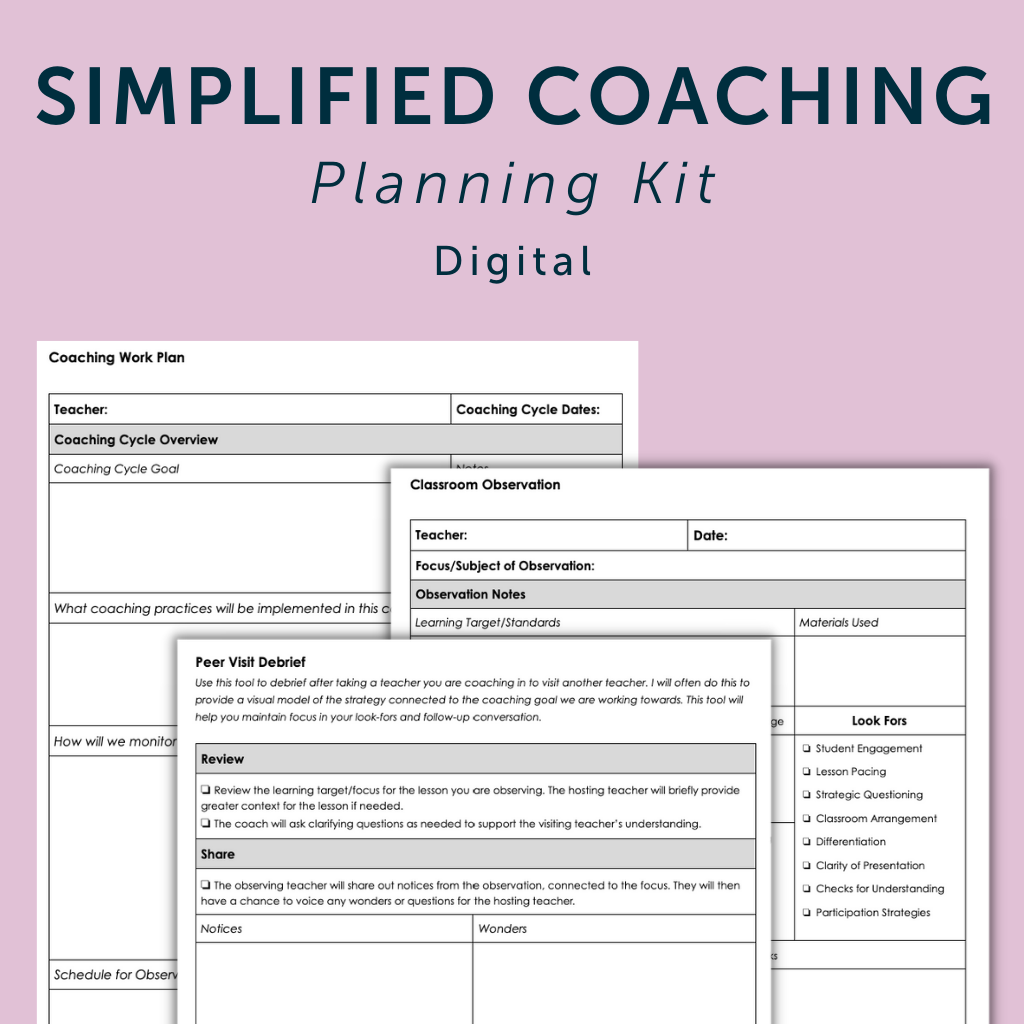
Other Posts You May Like
Talk Soon!

 Second, creating this Coaching Data Tracker is seriously great for your own reflection! For example, in the process of creating mine it was rewarding to see the student and teacher growth I contributed to in my coaching cycles. Additionally, it pushed me to think harder about how to achieve even better results in future coaching.
Second, creating this Coaching Data Tracker is seriously great for your own reflection! For example, in the process of creating mine it was rewarding to see the student and teacher growth I contributed to in my coaching cycles. Additionally, it pushed me to think harder about how to achieve even better results in future coaching.![]()

